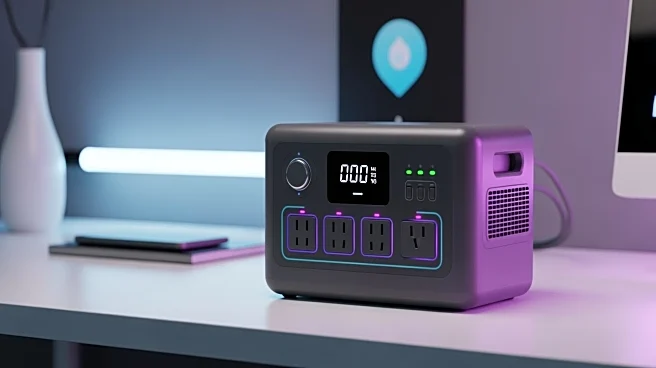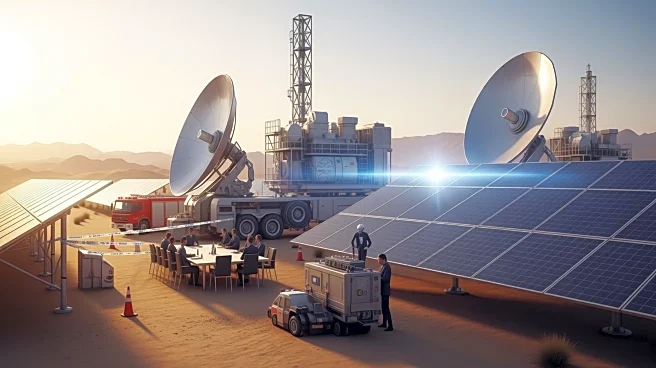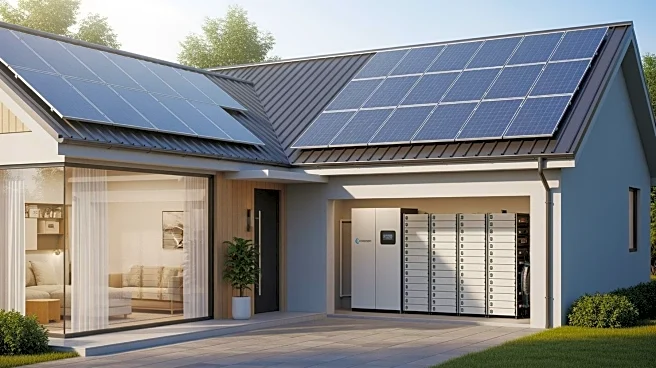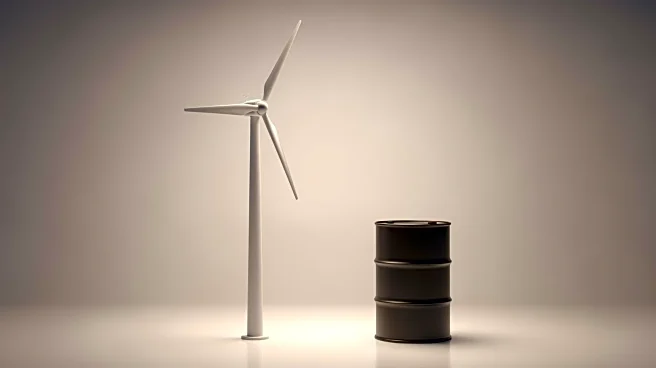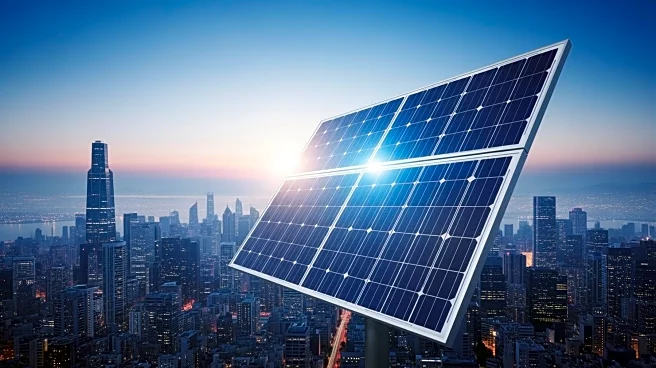What's Happening?
Anker has announced a significant discount on its Solix F3800 Plus portable power station, reducing the price by $2,100 to $2,699. This device is designed to provide backup power during outages, capable
of keeping essential appliances like refrigerators and Wi-Fi running. It can also power RVs and off-grid cabins. The Solix F3800 Plus offers a 3.84kWh capacity, expandable up to 53.8kWh with additional batteries, and delivers a 6,000-watt AC output. The product is marketed as an alternative to the Tesla Powerwall, offering similar performance in a portable design. Anker's power station includes a high-efficiency solar input and can be monitored via an app, with a five-year warranty included.
Why It's Important?
The increasing frequency of power outages in the U.S., often due to extreme weather, has heightened the demand for reliable backup power solutions. Anker's discounted power station provides a more accessible option for consumers seeking to safeguard their homes against outages without incurring high installation costs. This development reflects a broader trend towards decentralized energy solutions, as individuals and communities seek resilience against grid failures. The affordability and ease of setup of such devices could drive wider adoption, potentially reducing reliance on traditional energy infrastructure.
What's Next?
As the demand for backup power solutions grows, companies like Anker may continue to innovate and expand their product offerings. Consumers might see more competitive pricing and advanced features in portable power stations. Additionally, the integration of renewable energy sources, such as solar, into these systems could become more prevalent, aligning with broader environmental goals. The market for home energy solutions is likely to expand, with potential impacts on traditional utility models and energy policy.
Beyond the Headlines
The shift towards portable power solutions raises questions about energy independence and the role of traditional utilities. As more consumers adopt these technologies, there could be implications for energy distribution and regulation. Furthermore, the environmental impact of manufacturing and disposing of these devices warrants consideration, as does their role in promoting sustainable energy practices.


